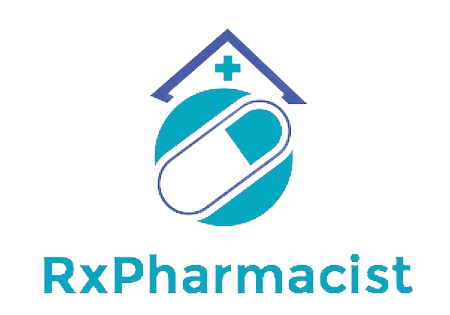Why We Can’t Be Hasty When It Comes to Drug Safety
To be, or not to be?
When it comes to drug safety, it is up to the U.S. Food and Drug Administration (FDA) to decide if a medication may be, or not be. The Risk Evaluation and Mitigation Strategy (REMS) requirement was set up by the FDA for select prescription medications which pose a high potential for serious adverse effects. As its name suggests, the REMS program is concerned with drug safety and in ensuring the benefits of a certain drug outweigh the risk.1
REMS does not only oversee adverse effects alone, but seeks to “prevent, monitor and manage” any medication the FDA expects could potentially violate safe medication practices.1 Although the FDA is in charge of determining whether REMS must be enforced for a medication, it is the manufacturer who is in charge of the program and submission of assessment reports for quality improvement or assurance efforts.2 Appendix 4 from A Framework for Benefit-Risk Counseling to Patients About Drugs with a REMS is a tool provided by the FDA which can be useful if you ever find yourself counselling a patient on a REMS classified drug.4
Drug safety efforts and their importance in public health can be seen as early as 1937. The antibiotic sulfonamide would result in hundreds of deaths due to the toxic excipient diethylene glycol supposedly claimed as being inert, you can read more about the incident via the June 1981 issue of the FDA Consumer magazine titled “sulfonamide disaster”.3 Later in the 1960s thalidomide was used for antiemetic effects in pregnant women, but resulted in severe teratogenic adverse effects made clear when babies were born with missing or deformed extremities.3



Science Museum Group. Thalomid (thalidomide) capsules. 2000-590 Science Museum Group Collection Online. Accessed March 13, 2021. https://collection.sciencemuseumgroup.org.uk/objects/co498098/thalomid-thalidomide-capsules-thalidomide.



Science Museum Group. Pair of artificial arms for a child, Roehampton, England, 1964. 1999-579 Science Museum Group Collection Online. Accessed March 13, 2021. https://collection.sciencemuseumgroup.org.uk/objects/co476754/pair-of-artificial-arms-for-a-child-roehampton-england-1964-artificial-arm.
The difference between these two events, however, is significant from the perspective of the United States. You see, after the sulfonamide tragedy the FDA mandated the 1938 Food, Drug, and Cosmetic Act (FDCA). At this point, pharmaceutical companies were required to conduct studies proving a drug is safe before becoming readily available to the general public.3 As such, thalidomide was never approved in the United States due to data suggesting deformities in animal models despite lobbying and immense political pressure against the clinical director at the time.3
This brief dive into history barely scratches the surface on the importance of pharmacovigilance but is helpful in understanding what can happen if we get a little too hasty when it comes to drug safety, which brings us back to REMS. You can view a list of all current REMS medications on the FDA website alongside their associated goals, materials and a comprehensive timeline of program updates. Additionally, if you want to go really deep into the U.S. regulations for REMS, visit this helpful FDA slidedeck.
References
- Center for Drug Evaluation, Research. Risk Evaluation and Mitigation Strategies (REMS). Accessed March 13, 2021. https://www.fda.gov/drugs/drug-safety-and-availability/risk-evaluation-and-mitigation-strategies-rems.
- Center for Drug Evaluation, Research. FAQs about REMS. Accessed March 13, 2021. https://www.fda.gov/drugs/risk-evaluation-and-mitigation-strategies-rems/frequently-asked-questions-faqs-about-rems.
- Alshammari TM. Drug safety: The concept, inception and its importance in patients’ health. Saudi Pharmaceutical Journal. 2016;24(4):405-412.
- A Framework for Benefit-Risk Counseling to Patients About Drugs with a REMS. U.S. Food and Drug Administration https://www.fda.gov/files/about%20fda/published/A-Framework-for-Benefit-Risk-Counseling-to-Patients-About-Drugs-with-a-REMS.pdf.
- Science Museum Group. Thalomid (thalidomide) capsules. 2000-590 Science Museum Group Collection Online. Accessed March 13, 2021. https://collection.sciencemuseumgroup.org.uk/objects/co498098/thalomid-thalidomide-capsules-thalidomide.
- Science Museum Group. Pair of artificial arms for a child, Roehampton, England, 1964. 1999-579 Science Museum Group Collection Online. Accessed March 13, 2021. https://collection.sciencemuseumgroup.org.uk/objects/co476754/pair-of-artificial-arms-for-a-child-roehampton-england-1964-artificial-arm.
- Science Museum Group. Pair of artificial arms for a child, Roehampton, England, 1964. 1999-579 Science Museum Group Collection Online. Accessed March 13, 2021. https://collection.sciencemuseumgroup.org.uk/objects/co476754/pair-of-artificial-arms-for-a-child-roehampton-england-1964-artificial-arm.
Why We Can’t Be Hasty When It Comes to Drug Safety Read More »
